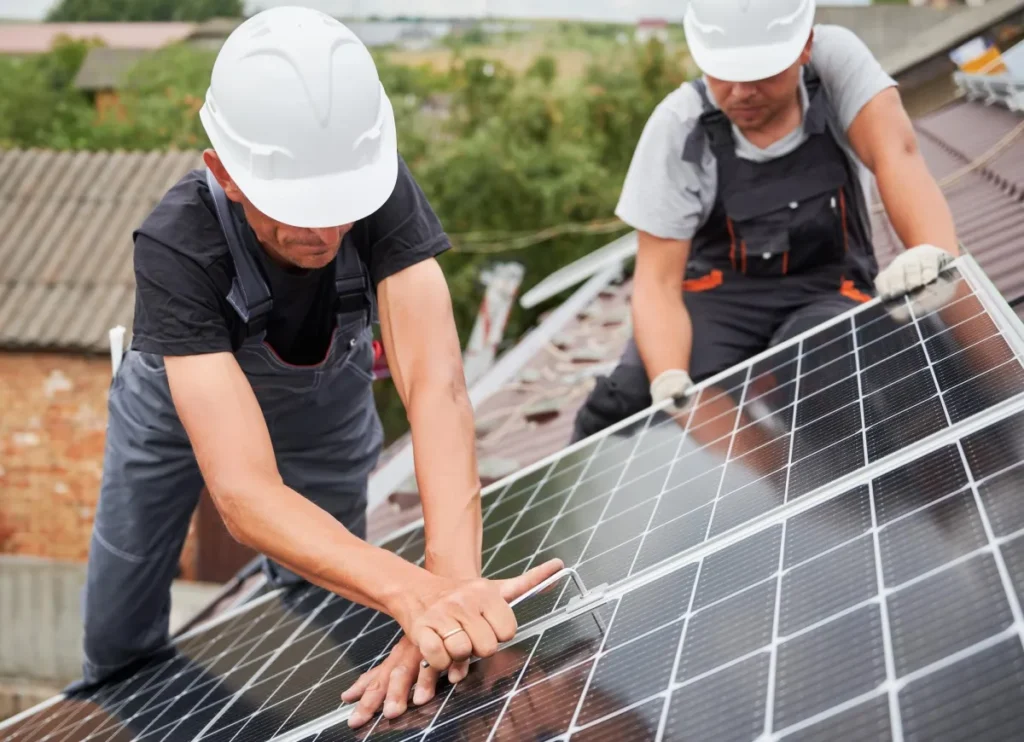
If your roof needs replacement and you already have solar panels installed, proper planning is essential. You can’t simply leave panels in place during roofing — they must be safely removed, stored, and reinstalled by licensed solar professionals.
Failing to do so can result in electrical damage, roof leaks, or even voided warranties. Here’s everything homeowners should know about protecting their solar system during a roof replacement.
1. Schedule a Solar Inspection Before Roofing Starts
Before your roofer begins work, schedule an inspection with your solar provider. A licensed electrician will:
- Evaluate your solar mounts and connections
- Identify damaged wiring or hardware
- Plan a safe removal sequence
This ensures your system can be detached properly and reinstalled without electrical or structural issues.
2. Use a Professional Detach and Reset Service
Solar panels should never be removed by roofing contractors. Only licensed solar electricians have the training and equipment to safely detach and reconnect electrical components.
A professional detach and reset service includes:
- Safe panel removal and wiring disconnection
- Secure storage during roof work
- Full reinstallation and performance testing afterward
This process protects both your solar system and your roof.
3. Coordinate Scheduling Between Roofing and Solar Teams
Communication is key. Work with both your roofer and solar company to align the timeline. The process typically follows three stages:
- Solar team detaches and stores panels.
- Roofing crew completes the new installation.
- Solar team reinstalls and tests your system.
Proper coordination ensures minimal downtime and keeps your home’s energy system running smoothly.
4. Protect Your Panels During Storage
During roof replacement, your panels should be stored safely away from debris, heavy tools, and extreme temperatures. Professional solar teams ensure panels are cleaned, padded, and kept in a secure location until reinstall day.
5. Verify Roof Readiness Before Reinstallation
Before reinstalling panels, your solar provider should inspect the new roof to ensure:
- Flashings and mounts are properly installed
- Roof penetrations are watertight
- Mounting layout remains compatible with your system
This step ensures your panels sit securely on the new roof without risk of leaks or misalignment.
6. Have Wiring and Inverters Rechecked
During reinstallation, electricians test all wiring and confirm inverters are functioning properly. Even small wiring errors can cause voltage imbalances or reduce output — so precise reconnection is essential.
7. Confirm System Monitoring After Reinstallation
Once your panels are back in place, your monitoring app should reconnect and display live production data. If it shows “offline” or low performance, technicians can adjust settings or recalibrate sensors before leaving.
8. Inspect Flashing and Seals for Roof Safety
Flashing protects your roof from leaks where mounts are attached. Licensed technicians inspect all seals and mounts to ensure water can’t penetrate — keeping both your roof and attic safe from damage.
9. Review Warranty and Insurance Requirements
Most solar and roofing warranties require proof that licensed professionals performed removal and reinstallation. Improper handling can void coverage, leaving you unprotected.
Sunaura Solar provides documentation for all detach and reset services, ensuring your warranties remain valid.
10. Schedule a Cleaning and Maintenance Check
After reinstalling your panels, it’s a perfect time for solar maintenance and cleaning. This ensures your panels are free of dust, pollen, and debris, so your system starts performing at its best right away.














